Spectrum Sensing Meets ISAC: An Spectrum Detection Scheme for ISAC Services Based on Improved Denoising Auto-Encoder and CNN
Abstract
1. Introduction
- (1)
- A more efficient spectrum utilization scheme is discussed by the fusion of SS and ISAC, and this scheme may provide more available spectrum for ISAC services, especially for 5G and beyond [18].
- (2)
2. Open Challenges When SS Meets ISAC
2.1. Hardware and RF Front-End Limitations
2.2. Spectrum Sharing and Dynamic Access
2.3. Interference Management
2.4. Machine Learning for Spectrum Sensing in ISAC
2.5. Security and Privacy Concerns
3. Proposed Scheme
3.1. System Model
3.2. Communication Model
3.3. Network Framework
4. Simulations and Discussions
4.1. Parameter Setting
4.2. Simulation Results
5. Conclusions
Author Contributions
Funding
Institutional Review Board Statement
Informed Consent Statement
Data Availability Statement
Conflicts of Interest
Abbreviations
| CR | Cognitive Radio |
| ISAC | Integrated sensing and communication |
| SS | Spectrum sensing |
| ED | Energy detection |
| MF | Matched Filtering |
| CSFD | Cyclic spectrum feature detection |
| CMD | Covariance matrix detection |
| CNN | Convolutional neural network |
| FL | Federated learning |
| PCA | Principal componnet component analysis |
References
- Attalla, S.A.; Seddik, K.G.; El-Sherif, A.A.; Rabia, S.I. Hybrid ARQ-CQI Feedback-Based Access Scheme in Cognitive Radio Networks. IEEE Trans. Cogn. Commun. Netw. 2020, 6, 728–739. [Google Scholar] [CrossRef]
- Lee, W.; Lee, K. Deep Learning-Aided Distributed Transmit Power Control for Underlay Cognitive Radio Network. IEEE Trans. Veh. Technol. 2021, 70, 3990–3994. [Google Scholar] [CrossRef]
- Cui, Y.; Ding, H.; Ma, Y.; Li, X.; Zhang, H.; Fang, Y. Energy-Efficient Integrated Sensing and Communication in Collaborative Millimeter Wave Networks. IEEE Trans. Wirel. Commun. 2025, 24, 2341–2357. [Google Scholar] [CrossRef]
- Chen, X.; He, X.; Feng, Z.; Wei, Z.; Zhang, Q.; Yuan, X.; Zhang, P. Joint Localization and Communication Enhancement in Uplink Integrated Sensing and Communications System With Clock Asynchronism. IEEE J. Sel. Areas Commun. 2024, 42, 2659–2673. [Google Scholar] [CrossRef]
- Wang, W.; Wang, J.; Li, C. A Signal Detection Method Based on Hybrid Energy Detection. In Proceedings of the 2022 4th International Conference on Intelligent Control, Measurement and Signal Processing (ICMSP), Hangzhou, China, 8–10 July 2022; pp. 695–700. [Google Scholar]
- Zhang, W.; Mallik, R.K.; Letaief, K.B. Optimization of cooperative spectrum sensing with energy detection in cognitive radio networks. IEEE Trans. Wirel. Commun. 2009, 8, 5761–5766. [Google Scholar] [CrossRef]
- Mohamad, M.H.; Wen, H.C.; Ismail, M. Matched filter detection technique for GSM band. In Proceedings of the 2012 International Symposium on Telecommunication Technologies, Kuala Lumpur, Malaysia, 26–28 November 2012; pp. 271–274. [Google Scholar]
- Sherbin, K.; Sindhu, V. Cyclostationary Feature Detection for Spectrum Sensing in Cognitive Radio Network. In Proceedings of the 2019 International Conference on Intelligent Computing and Control Systems (ICCS), Madurai, India, 15–17 May 2019; pp. 1250–1254. [Google Scholar]
- Widianto, M.H.; Suratman, F.Y.; Meylani, L. Evaluation spectrum sensing in Cognitive Radio based on signal covariance matrix. In Proceedings of the 2016 Asia Pacific Conference on Multimedia and Broadcasting (APMediaCast), Bali, Indonesia, 17–19 November 2016; pp. 84–88. [Google Scholar]
- Cui, Y.; Liu, F.; Jing, X.; Mu, J. Integrating Sensing and Communications for Ubiquitous IoT: Applications, Trends, and Challenges. IEEE Netw. 2021, 35, 158–167. [Google Scholar] [CrossRef]
- Liu, J.; Zhou, C.; Sheng, M.; Yang, H.; Huang, X.; Li, J. Resource Allocation for Adaptive Beam Alignment in UAV-Assisted Integrated Sensing and Communication Networks. IEEE J. Sel. Areas Commun. 2025, 43, 350–363. [Google Scholar] [CrossRef]
- Xu, Y.; Li, Y.; Quek, T.Q.S. RIS-Enhanced Cognitive Integrated Sensing and Communication: Joint Beamforming and Spectrum Sensing. IEEE J. Sel. Areas Commun. 2025, 43, 795–810. [Google Scholar] [CrossRef]
- Mu, J.; Kadoch, M.; Yuan, T.; Lv, W.; Liu, Q.; Li, B. Explainable Federated Medical Image Analysis through Causal Learning and Blockchain. IEEE J. Biomed. Health Inform. 2024, 28, 3206–3218. [Google Scholar] [CrossRef] [PubMed]
- Mu, J.; Tan, Y.; Xie, D.; Zhang, F.; Jing, X. CNN and DCGAN for Spectrum Sensors over Rayleigh Fading Channel. Wirel. Commun. Mob. Comput. 2021, 2021, 9970600. [Google Scholar] [CrossRef]
- Mu, J.; Cui, Y.; Ouyang, W.; Yang, Z.; Yuan, W.; Jing, X. Federated Learning in 6G Non-Terrestrial Network for IoT services: From the Perspective of Perceptive Mobile Network. IEEE Netw. 2024, 38, 72–79. [Google Scholar] [CrossRef]
- Huang, H.; Shi, W.; Feng, Y.; Niu, C.; Cheng, G.; Huang, J.; Liu, Z. Active Client Selection for Clustered Federated Learning. IEEE Trans. Neural Netw. Learn. Syst. 2024, 35, 16424–16438. [Google Scholar] [CrossRef] [PubMed]
- Li, H.; Cai, Z.; Wang, J.; Tang, J.; Ding, W.; Lin, C.T.; Shi, Y. FedTP: Federated Learning by Transformer Personalization. IEEE Trans. Neural Netw. Learn. Syst. 2024, 35, 13426–13440. [Google Scholar] [CrossRef] [PubMed]
- Chen, Y.; Zhang, H.; Hu, H.; Wang, Q. An Efficient Cooperative Spectrum Sensing Algorithm Based on BP Neural Network. In Proceedings of the 2014 International Conference on Wireless Communication and Sensor Network, Wuhan, China, 13–14 December 2014; pp. 297–301. [Google Scholar]
- Li, W. Research and optimization of sensing algorithm for 6G communication and sensing integrated network. In Proceedings of the 2023 IEEE International Conference on Sensors, Electronics and Computer Engineering (ICSECE), Jinzhou, China, 18–20 August 2023; pp. 1043–1048. [Google Scholar]
- Li, X.; Zhang, H.; Zhang, R. Adaptive Graph Auto-Encoder for General Data Clustering. IEEE Trans. Pattern Anal. Mach. Intell. 2022, 44, 9725–9732. [Google Scholar] [CrossRef] [PubMed]
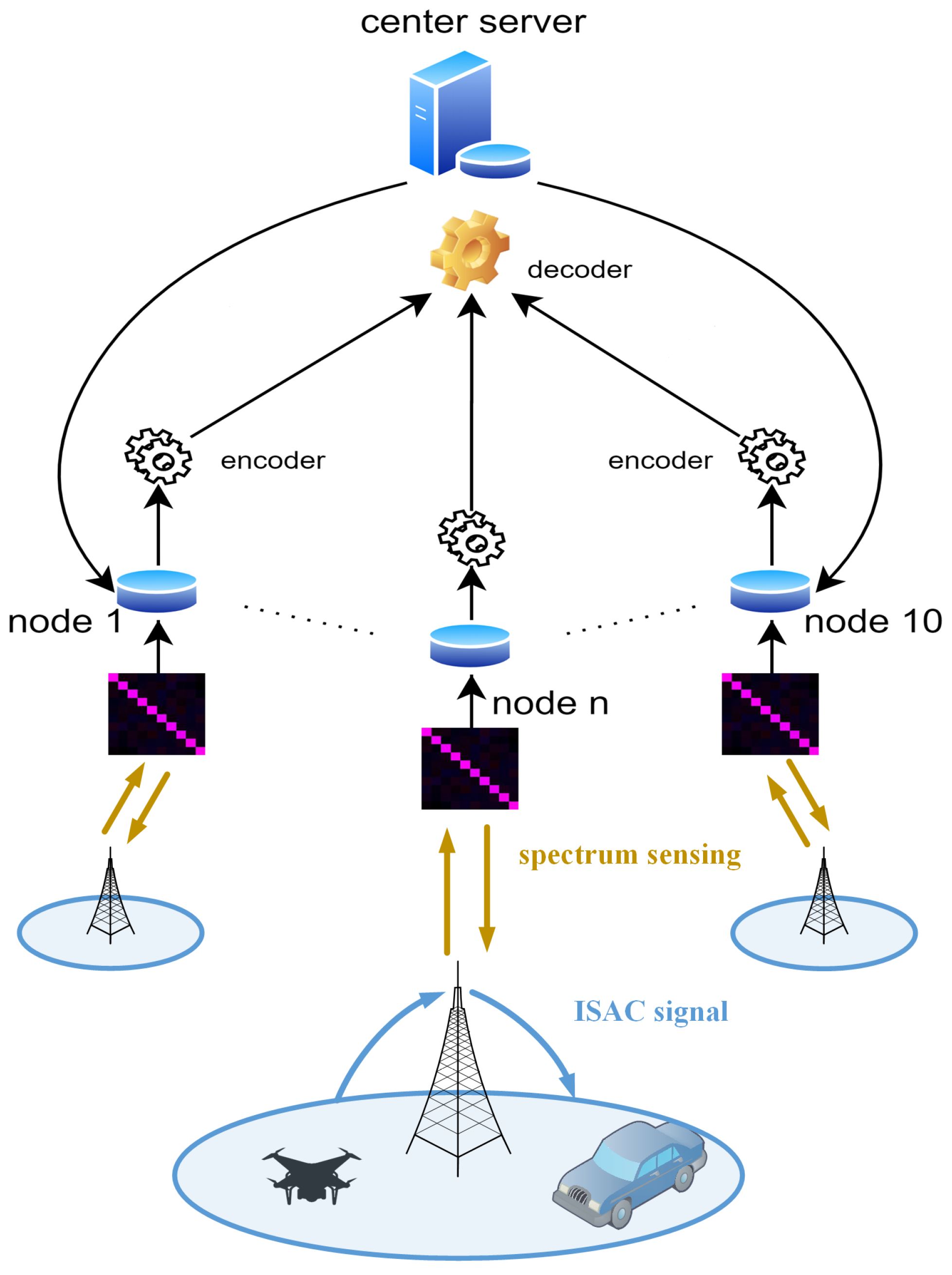

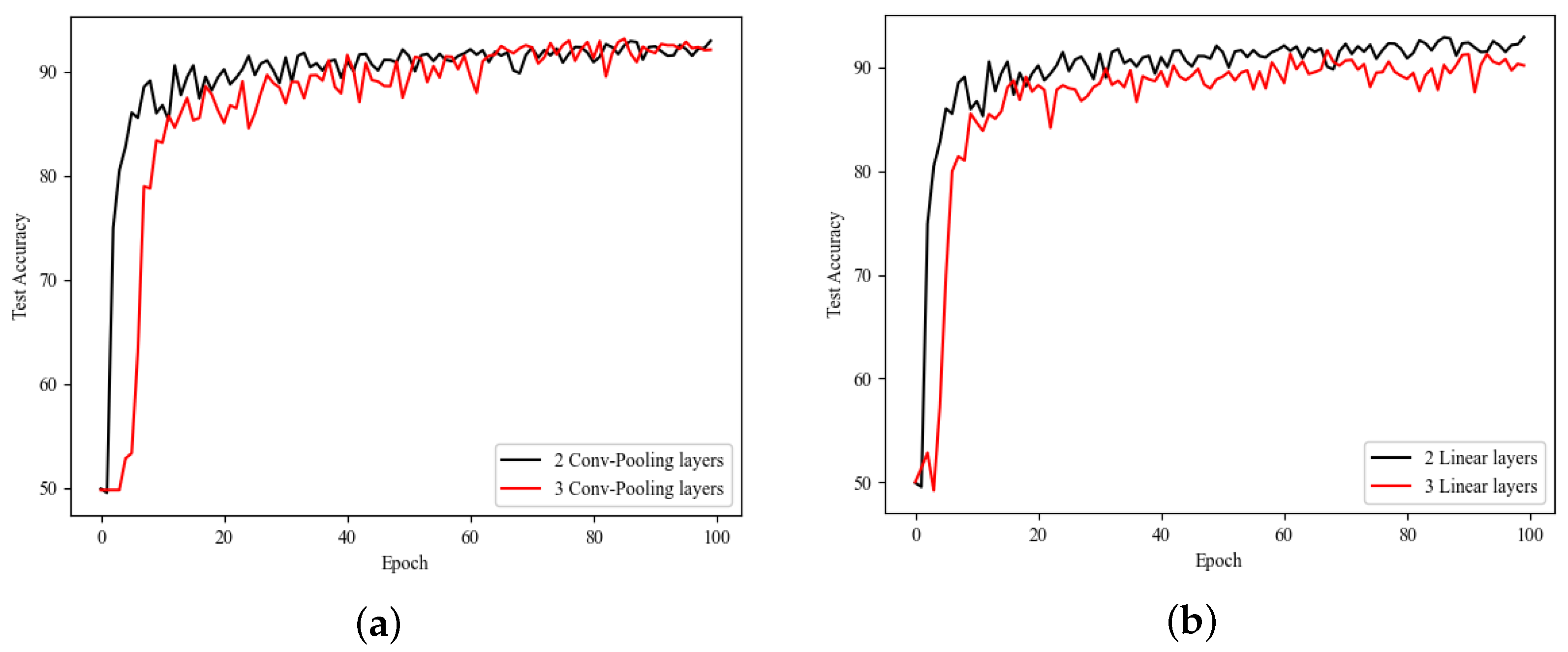
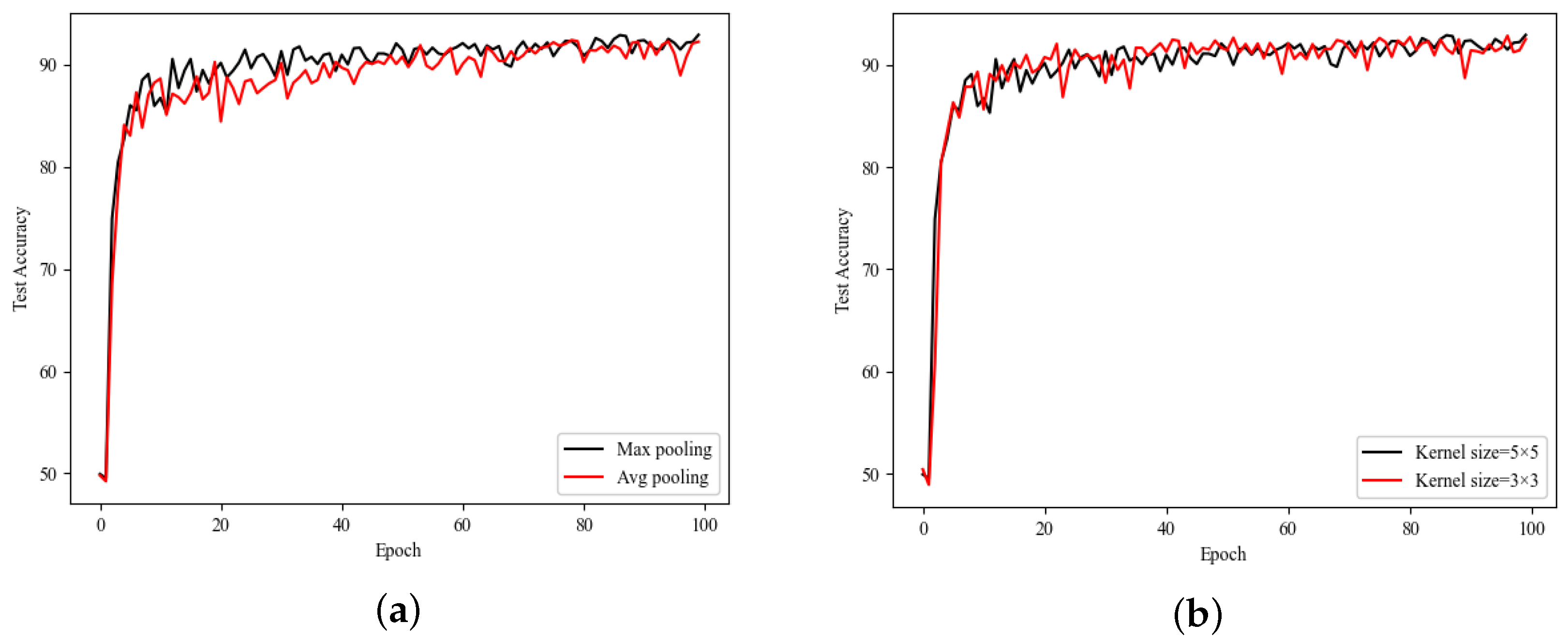
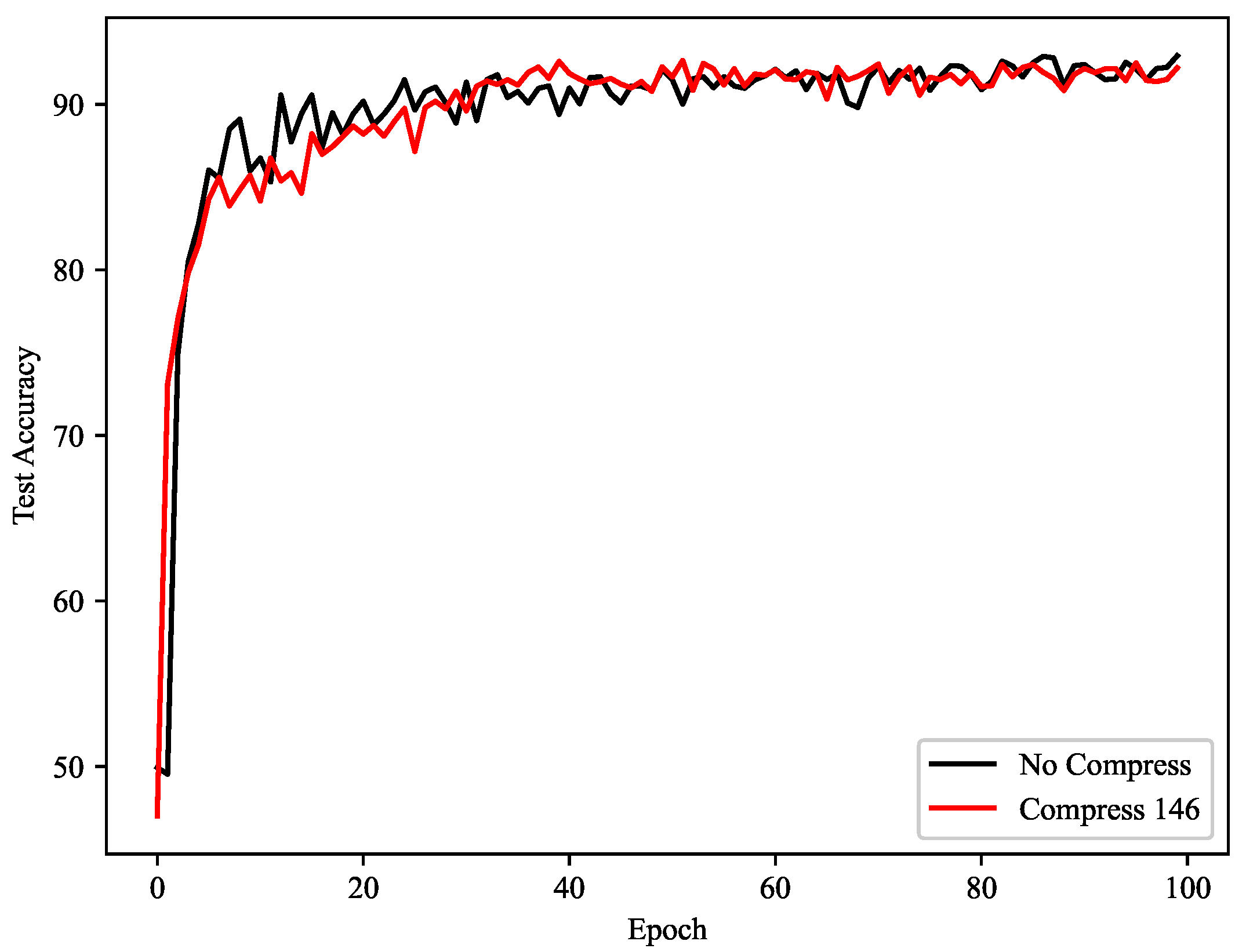
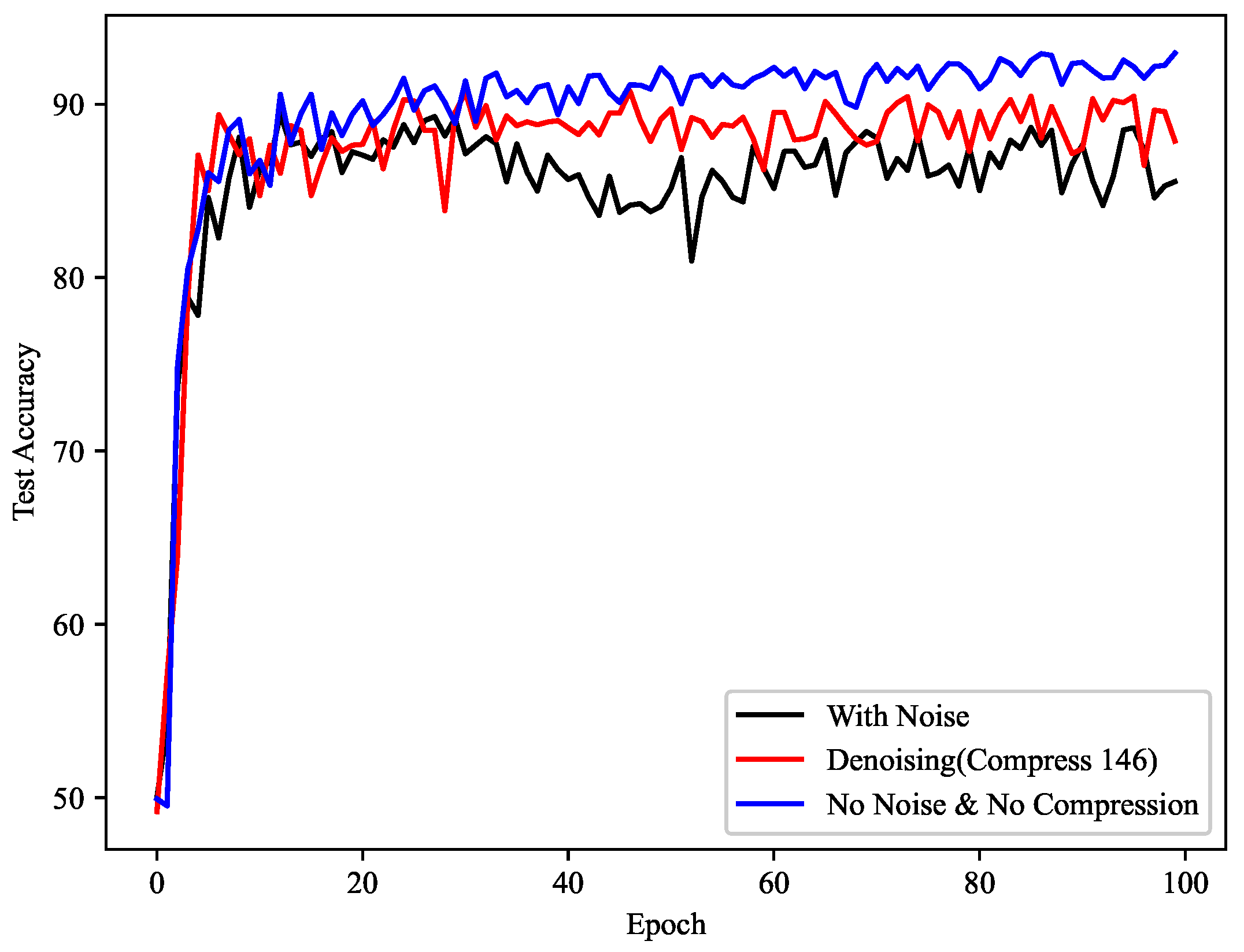
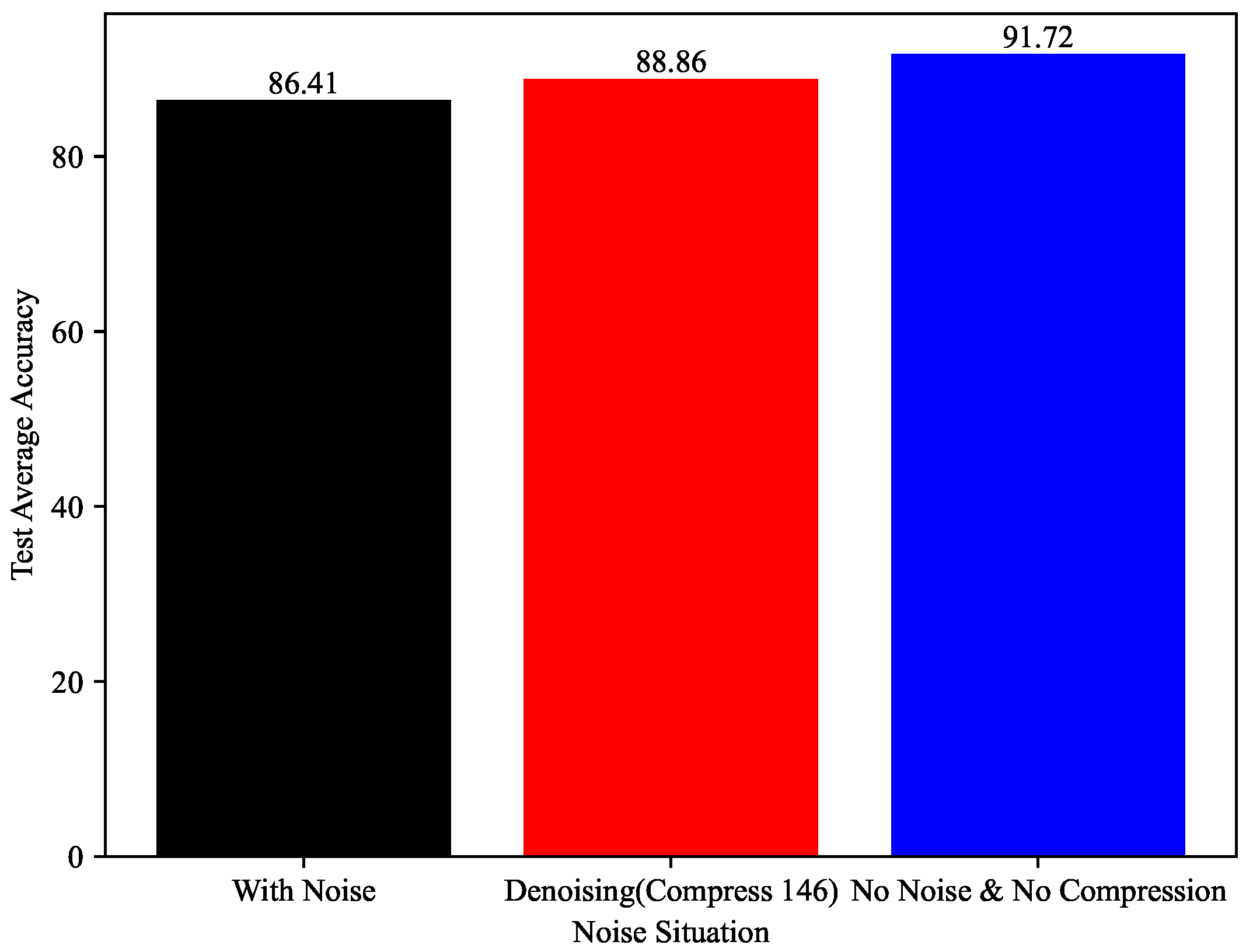
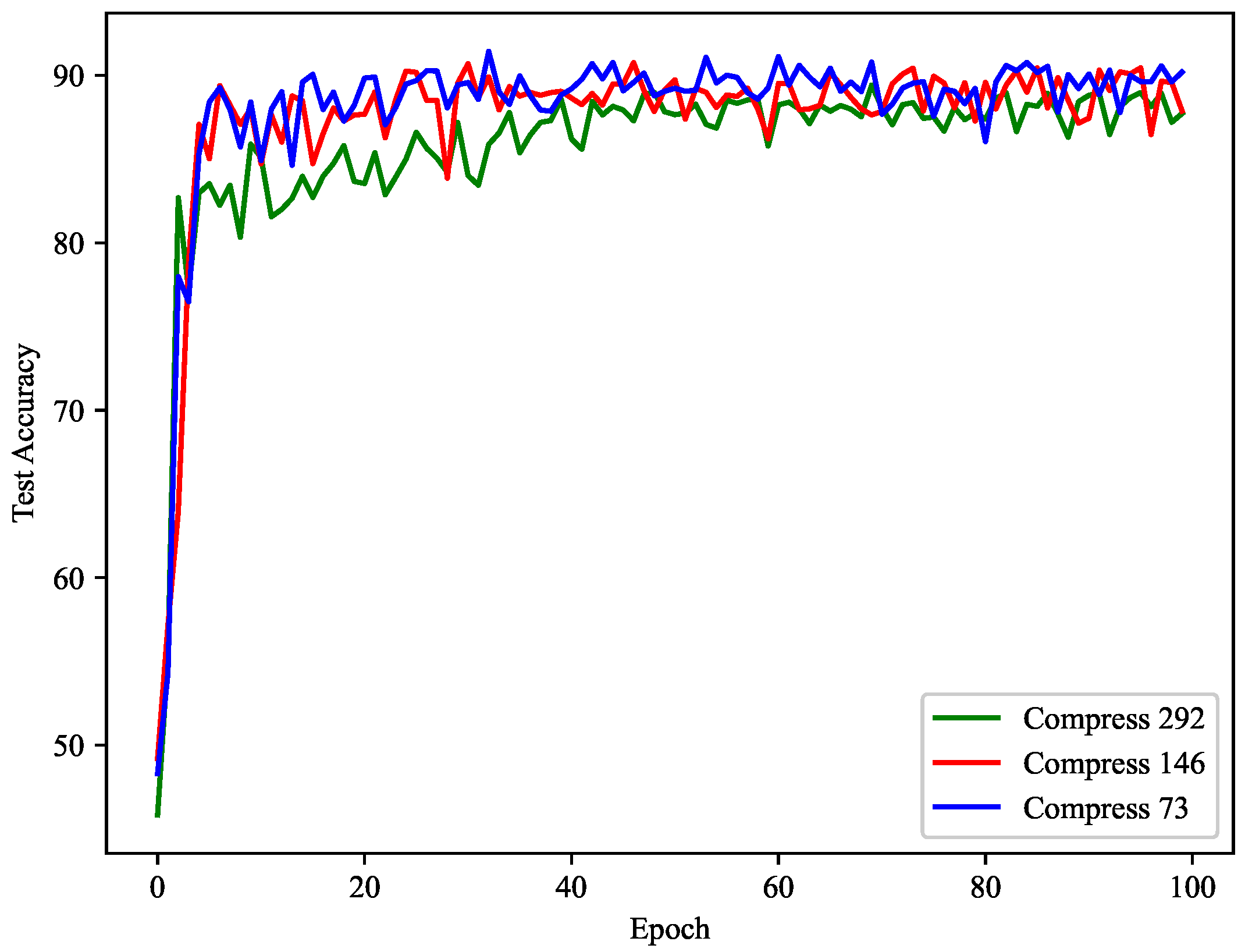
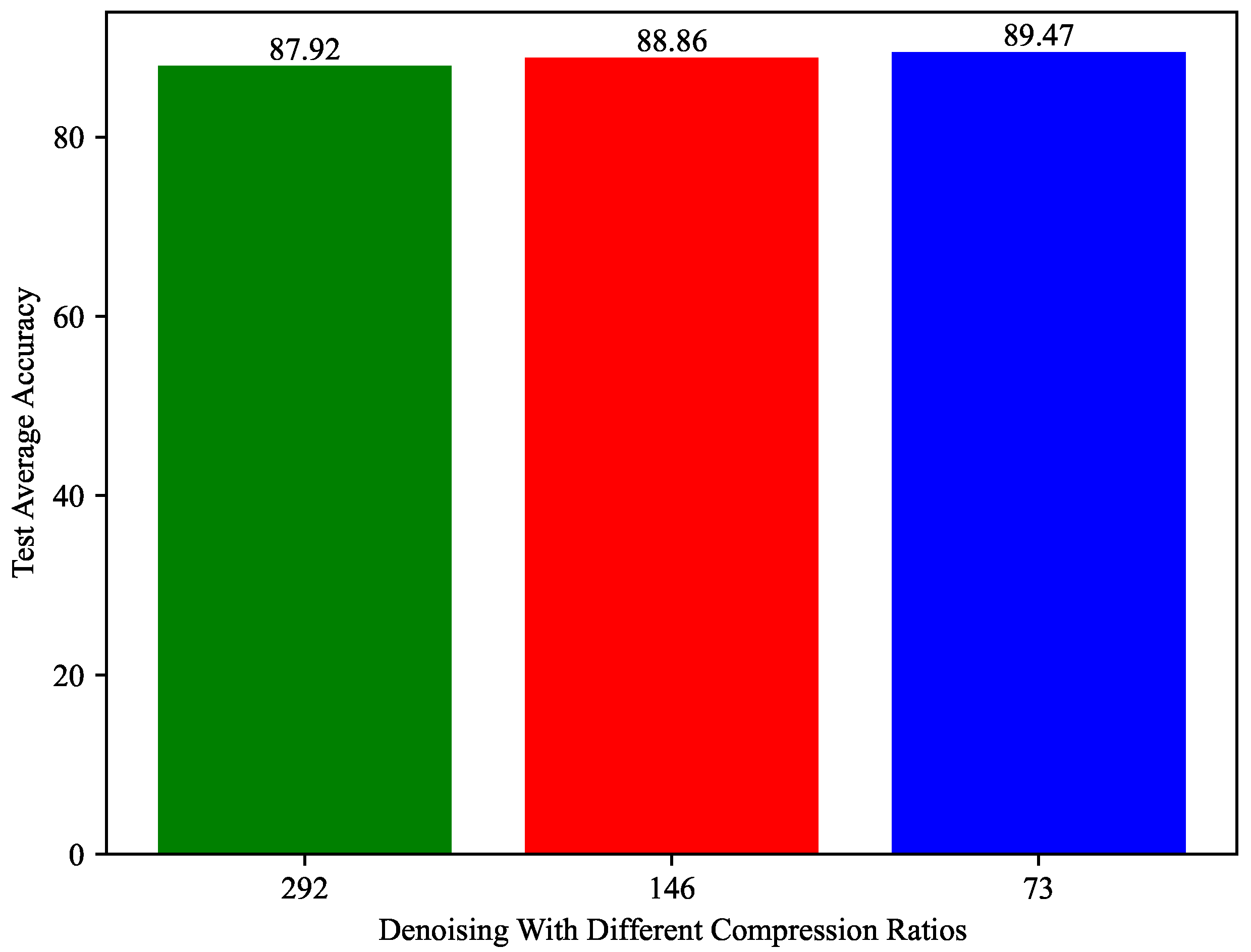
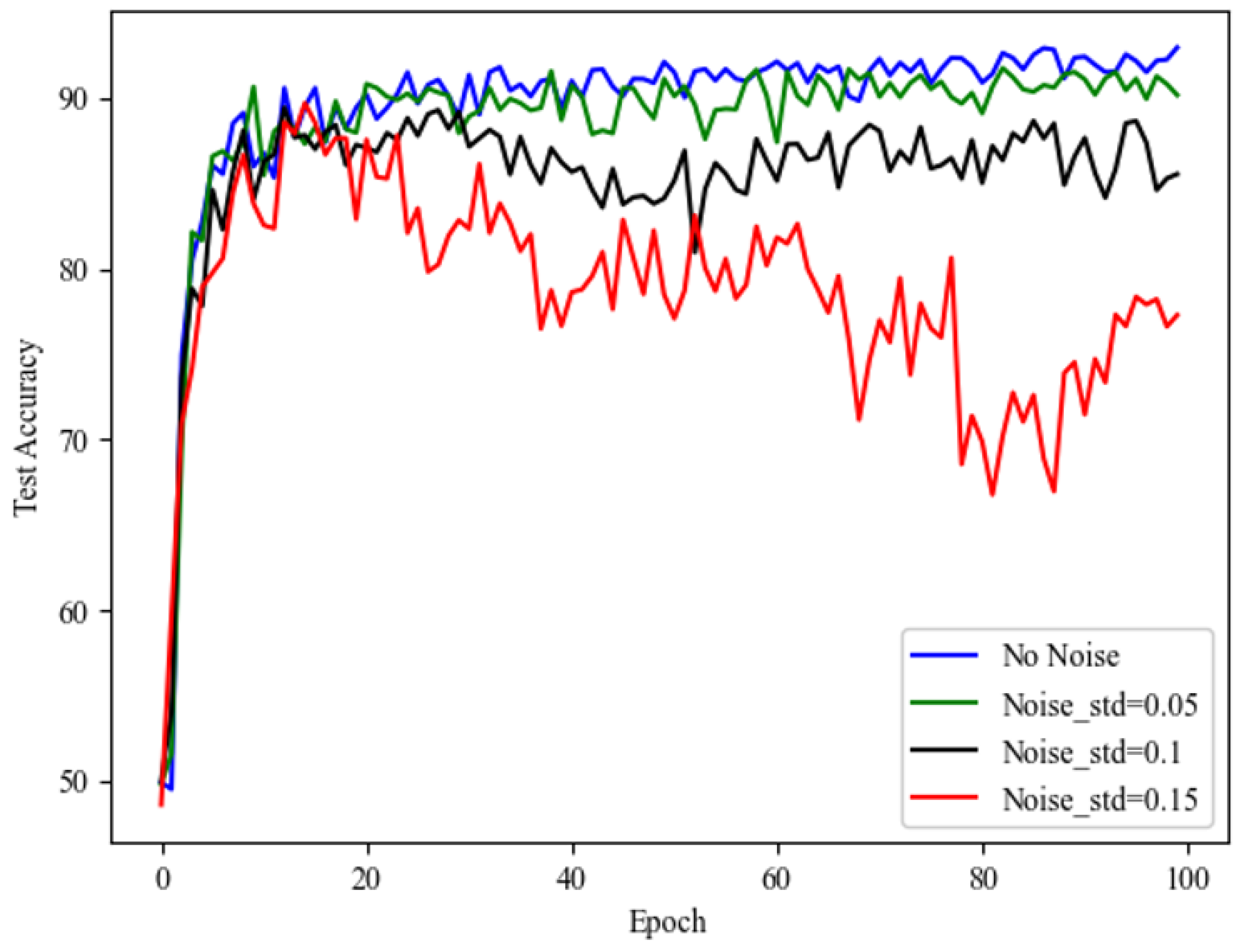
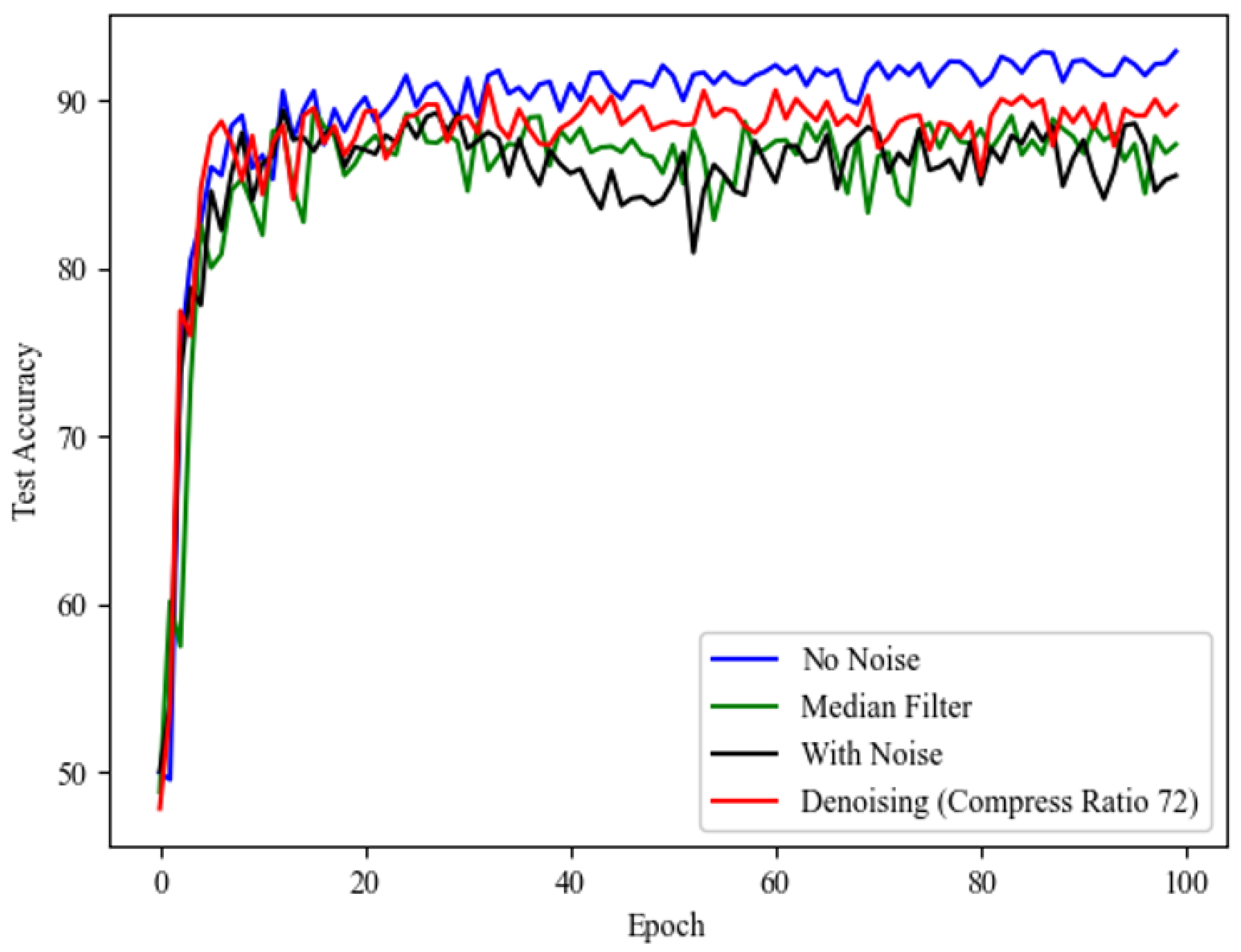
| Layer Name | Parameters |
|---|---|
| Convolutional Layer 1 | Kernel Size: |
| Max- Pooling Layer 1 | Pool Size: |
| ReLU Activation | - |
| Convolutional Layer 2 | Kernel Size: |
| Max- Pooling Layer 2 | Pool Size: |
| Dropout Layer | Default Dropout Probability |
| Flatten Layer | - |
| Fully Connected Layer 1 | in features: , out features: |
| ReLU Activation | - |
| Dropout Layer | Default Dropout Probability |
| Output Layer | in features: , out features: |
| Layer Name | Input/Output Size |
|---|---|
| Encoder | - |
| Fully Connected Layer 1 | Input: 18,702, Output: 2048 |
| Tanh Activation | Input/Output: 2048 |
| Fully Connected Layer 2 | Input: 2048, Output: 512 |
| Tanh Activation | Input/Output: 512 |
| Fully Connected Layer 3 | Input: 512, Output: 256 |
| Tanh Activation | Input/Output: 256 |
| Fully Connected Layer 4 | Input: 256, Output: X (Defaults to 128) |
| Decoder | - |
| Fully Connected Layer 1 | Input: X(Defaults to 128), Output: 256 |
| Tanh Activation | Input/Output: 256 |
| Fully Connected Layer 2 | Input: 256, Output: 512 |
| Tanh Activation | Input/Output: 512 |
| Fully Connected Layer 3 | Input: 512, Output: 2048 |
| Tanh Activation | Input/Output: 2048 |
| Fully Connected Layer 4 | Input: 2048, Output: 18,702 |
| Tanh Activation | Input/Output: 18,702 |
| Parameters | Values |
|---|---|
| Number of training epochs | 100 |
| Number of nodes | 10 |
| Batch size | 1 |
| Number of samples in the training set per node | 2000 |
| Number of samples in the test set per node | 1000 |
| Optimizer | Adam |
| Learning rate | 0.001 |
Disclaimer/Publisher’s Note: The statements, opinions and data contained in all publications are solely those of the individual author(s) and contributor(s) and not of MDPI and/or the editor(s). MDPI and/or the editor(s) disclaim responsibility for any injury to people or property resulting from any ideas, methods, instructions or products referred to in the content. |
© 2025 by the authors. Licensee MDPI, Basel, Switzerland. This article is an open access article distributed under the terms and conditions of the Creative Commons Attribution (CC BY) license (https://creativecommons.org/licenses/by/4.0/).
Share and Cite
Li, Y.; Song, H.; Ren, X.; Zhang, Z.; Cheng, S.; Jing, X. Spectrum Sensing Meets ISAC: An Spectrum Detection Scheme for ISAC Services Based on Improved Denoising Auto-Encoder and CNN. Appl. Sci. 2025, 15, 3381. https://doi.org/10.3390/app15063381
Li Y, Song H, Ren X, Zhang Z, Cheng S, Jing X. Spectrum Sensing Meets ISAC: An Spectrum Detection Scheme for ISAC Services Based on Improved Denoising Auto-Encoder and CNN. Applied Sciences. 2025; 15(6):3381. https://doi.org/10.3390/app15063381
Chicago/Turabian StyleLi, Yuebo, Hengguo Song, Xiaoyang Ren, Zhiyue Zhang, Sichao Cheng, and Xiaojun Jing. 2025. "Spectrum Sensing Meets ISAC: An Spectrum Detection Scheme for ISAC Services Based on Improved Denoising Auto-Encoder and CNN" Applied Sciences 15, no. 6: 3381. https://doi.org/10.3390/app15063381
APA StyleLi, Y., Song, H., Ren, X., Zhang, Z., Cheng, S., & Jing, X. (2025). Spectrum Sensing Meets ISAC: An Spectrum Detection Scheme for ISAC Services Based on Improved Denoising Auto-Encoder and CNN. Applied Sciences, 15(6), 3381. https://doi.org/10.3390/app15063381






